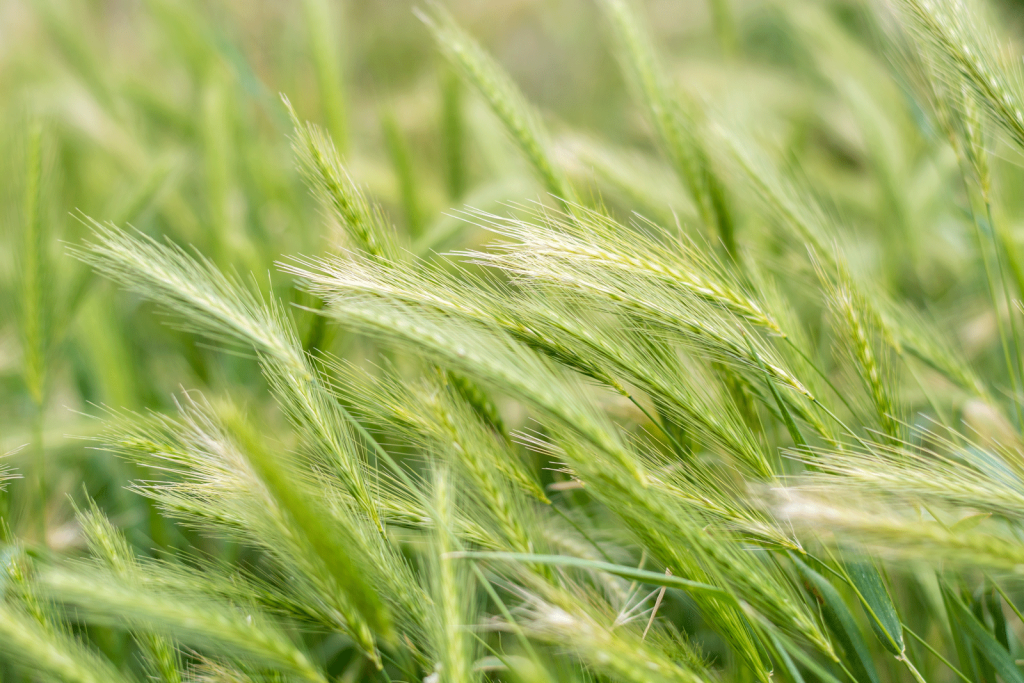
How using cover crops can improve soil health, suppress weeds, and create better conditions for native grass and forb establishment.
When preparing land for a Conservation Reserve Program (CRP) planting, site preparation is everything. While weed control and seedbed preparation are often top of mind, one highly effective but underutilized tool is the use of cover crops.
Cover crops (temporary plantings grown between main crops or prior to native seeding) can significantly enhance soil health, suppress weed pressure, and improve conditions for the successful establishment of native grasses and forbs.
At All Native Seed, we’ve seen how integrating cover crops into CRP site prep can make a major difference. Here’s how and why to include them in your plan.
What Are Cover Crops?
Cover crops are fast-growing plants (typically grasses, legumes, or cereal grains) planted to cover the soil during the off-season or prior to long-term perennial planting. Common cover crops include:
- Cereal rye
- Oats
- Wheat
- Radishes
- Crimson clover
Unlike cash crops, cover crops are not harvested. Instead, they’re managed to improve soil conditions and are often terminated before planting permanent vegetation like native grasses and wildflowers.
How Cover Crops Support CRP Establishment
Suppress Weeds Naturally
Weed competition is one of the biggest challenges when establishing native species. Cover crops form a dense canopy that shades out emerging weeds, reducing the need for repeated herbicide applications.
- Species like rye and oats grow quickly and outcompete aggressive annual weeds.
- A thick cover crop stand minimizes bare soil, preventing new weed seeds from germinating.
By suppressing weeds early on, cover crops set the stage for native seedlings to emerge and thrive.
Improve Soil Health and Structure
Healthy soil is essential for strong root development and long-term native plant success. Cover crops work behind the scenes to build better soil.
- Deep-rooted varieties like radishes and rye break up compacted soils, improving infiltration and aeration.
- Legumes like clover add organic matter and nitrogen, feeding the soil biology that supports native plants.
- As cover crops decompose, they release nutrients slowly, enriching the seedbed without synthetic inputs.
In short, cover crops act like nature’s soil builders, prepping the ground for long-term restoration.
Prevent Soil Erosion and Nutrient Loss
CRP sites, especially those previously in row crop production, are often vulnerable to erosion. A bare field between herbicide treatment and native seeding is at risk of:
- Topsoil loss during rain or wind events
- Nutrient leaching, especially in sandy soils
- Runoff and sedimentation in nearby waterways
Cover crops create a living root system that anchors soil, captures excess nutrients, and helps retain moisture. This protective layer keeps your soil, and your conservation investment, intact.
Create a Better Seedbed for Native Plants
When properly managed, a cover crop can be terminated and turned into mulch-like residue that benefits native seeds in multiple ways:
- Improves seed-to-soil contact when rolled or lightly tilled.
- Helps retain soil moisture, especially during dry spring planting periods.
- Regulates soil temperature, reducing stress on new seedlings.
A well-prepped, cover-cropped site gives native seeds a better environment for germination and long-term success.
When and How to Use Cover Crops for CRP
Timing
- Fall planting of cover crops is ideal if you’re planning to seed native species the following spring or summer.
- Allow the cover crop to establish fully before winter.
Termination
- Terminate the cover crop in late spring before it goes to seed, using mowing, herbicide, or rolling.
- Leave the residue in place to act as natural mulch, or lightly incorporate it, depending on your seeding method.
Seeding CRP Species After Cover Crops
- Use a native seed drill to plant directly into the residue.
- Ensure proper calibration so native seeds are planted at the correct depth (typically ¼” or less).
- Consider using BOOST-treated native seed from All Native Seed to improve seedling vigor in this competitive environment.
All Native Seed: Supporting Smart CRP Establishment
At All Native Seed, we provide more than just seed, we support your success from planning to planting. Whether you’re incorporating a cover crop strategy or transitioning straight into native species, we offer:
- NRCS-compliant native seed mixes
- BOOST treatment for enhanced germination
- Expert guidance on timing, site prep, and planting techniques
Our mission is to help you make the most of your CRP investment with practical, science-backed solutions like cover crops that support long-term ecological health.
Ready to Boost Your CRP Success with Cover Crops?
Integrating cover crops into your CRP plan is a powerful way to suppress weeds, build better soil, and create ideal conditions for native plantings. Done right, it can be the difference between a marginal stand and a thriving habitat.
Contact All Native Seed today to get expert advice and high-quality seed mixes tailored to your site and goals. Let’s grow success from the ground up.
